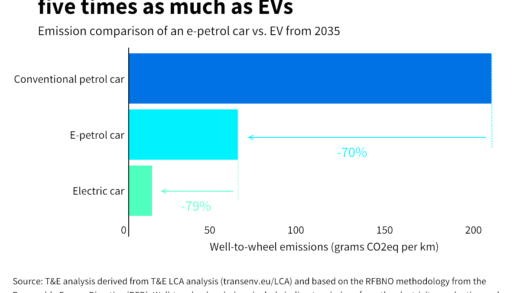NASCAR race cars are expertly prepared for race day, involving thorough inspections, tire selections, and fuel adjustments. Customizations for different tracks include aerodynamic changes and gear ratio adjustments. Effective communication between drivers and teams is crucial for strategic decisions and performance feedback during races.
Materials Used in NASCAR Race Cars
NASCAR race cars utilize lightweight yet durable materials to ensure maximum performance on the track. These materials are crucial in enhancing speed and safety. Commonly used materials include:
- Carbon Fiber: Known for its high strength-to-weight ratio, carbon fiber is often used in body panels.
- Aluminum: Lightweight and resistant to corrosion, aluminum is used for engine components and structural elements.
- Steel: Though heavier, steel is used for the roll cage, providing essential safety in the event of a crash.
- Composites: These materials combine various fibers and resins, offering flexibility and strength.
Each material is chosen carefully to balance weight and strength, allowing NASCAR cars to reach incredible speeds while maintaining structural integrity. Innovations in material science continue to push the limits of what these race cars can achieve.
Differences Between NASCAR Race Cars and Regular Street Cars
NASCAR race cars are distinctly different from regular street cars. The primary differences lie in performance, design, and functionality. Key distinctions include:
- Performance: NASCAR cars are built for speed, featuring high-powered engines that can exceed 800 horsepower, compared to standard street cars which typically range from 100 to 300 horsepower.
- Design: Race cars have aerodynamic shapes to reduce drag, unlike street cars which prioritize aesthetics and comfort.
- Weight: NASCAR cars are engineered to be lighter, using specialized materials that are not feasible in everyday vehicles.
- Safety Features: NASCAR vehicles are equipped with advanced safety systems, including reinforced roll cages and specialized fuel cells, which are not present in standard cars.
These differences highlight the specialized nature of NASCAR race cars, designed solely for the demands of high-speed racing.
Key Components of a NASCAR Race Car
Understanding the key components of a NASCAR race car is vital for grasping how these machines operate at top speeds. Important parts include:
- Engine: The heart of the car, NASCAR engines are meticulously crafted to deliver unmatched power.
- Transmission: This component translates the engine’s power into speed, featuring specialized gearing for optimal performance.
- Suspension: The suspension system absorbs shocks and maintains tire contact with the road, crucial for handling.
- Tires: NASCAR uses unique tires designed for high grip and durability on various tracks.
These components work in harmony to ensure that NASCAR cars can withstand the rigors of racing while delivering exceptional speed and control.
Designing and Building NASCAR Engines
The process of designing and building NASCAR engines involves a complex interplay of engineering and creativity. Each engine is tailored specifically for racing, focusing on:
- Power Output: Engineers aim for maximum horsepower while maintaining reliability.
- Weight Distribution: Balancing the engine within the car is crucial for handling and speed.
- Cooling Systems: Efficient cooling is vital due to the extreme conditions during races, preventing engine failure.
These engines undergo rigorous testing to ensure they can perform under the intense demands of NASCAR racing, showcasing the pinnacle of automotive engineering.
The Impact of Aerodynamics on NASCAR Performance
Aerodynamics plays a crucial role in NASCAR race cars, directly influencing speed and stability on the track. The design of these cars focuses on minimizing air resistance, which is vital for achieving high speeds. Key aerodynamic features include:
- Streamlined Shapes: The overall shape of NASCAR cars is optimized to cut through air efficiently, reducing drag and increasing speed.
- Front Splitters: These components generate downforce, helping the car stay grounded at high speeds, improving grip and handling.
- Rear Spoilers: These are essential for stability, providing additional downforce and controlling airflow over the car, especially during turns.
- Underbody Design: The smooth underbody helps in reducing turbulence, further enhancing aerodynamic efficiency.
Understanding these aerodynamic principles allows teams to tweak their designs for various tracks, ensuring optimal performance. In NASCAR, where every fraction of a second counts, mastering aerodynamics can make all the difference.
The Choreography of Pit Stops
Pit stops are a vital part of NASCAR racing, representing a high-stakes ballet of speed and precision. During a race, drivers may make multiple pit stops for fuel, tire changes, and adjustments. The efficiency of these stops can dramatically affect a team’s chances of winning. Key elements of pit stops include:
- Team Coordination: A well-drilled crew can complete a pit stop in under 15 seconds, showcasing their training and teamwork.
- Equipment: Specialized tools and equipment, like air guns for tire changes, are essential for speed.
- Communication: Drivers and crew communicate seamlessly, ensuring everyone knows their role during the stop.
- Strategy: Deciding when to pit can be as crucial as the actual stop; teams must balance fuel needs and tire wear.
The choreography of pit stops is a fascinating blend of speed and strategy, often determining the outcome of races.
Innovative Safety Features in NASCAR Race Cars
Safety features in NASCAR race cars are paramount, designed to protect drivers during the extreme conditions of high-speed racing. These innovations reflect the sport’s commitment to driver safety. Key safety components include:
- Roll Cages: Constructed from high-strength steel, roll cages protect drivers by maintaining the car’s structure during crashes.
- HANS Devices: These head and neck support systems help prevent serious injuries during collisions.
- Fire-Resistant Suits: Drivers wear specially designed suits that protect them from fire hazards during accidents.
- Safety Fuel Cells: These cells minimize the risk of fuel leaks and fires during crashes.
Continual advancements in safety technology ensure that NASCAR remains at the forefront of motorsport safety, providing drivers with the best possible protection while they compete at high speeds.
Preparing NASCAR Cars for Race Day
NASCAR race cars undergo meticulous preparations before race day to ensure peak performance. The entire process is a well-orchestrated operation involving various steps:
- Inspection: Each car is thoroughly inspected for any mechanical issues, ensuring that everything is in top shape.
- Setting Up Suspension: Teams adjust the suspension settings to optimize handling based on the track’s surface and conditions.
- Fueling: Cars are filled with high-octane fuel tailored for maximum power output during the race.
- Tire Selection: Teams choose tires based on the expected weather and track conditions, balancing grip and durability.
These preparations are crucial; even minor details can influence the outcome of a race. Teams leave no stone unturned, ensuring their drivers have the best possible chance to win.
Customizing Cars for Different Tracks
Customizing NASCAR cars for different tracks is essential for success in racing. Each track presents unique challenges, and teams adapt their cars accordingly:
- Aerodynamic Adjustments: Teams modify the car’s aerodynamics with different spoilers and splitters to optimize downforce based on track layout.
- Gear Ratios: Adjusting gear ratios helps teams maximize speed on tracks with varying lengths and curves.
- Tire Choices: Specific tire compounds are selected to provide the best grip for the track conditions, whether it’s asphalt or concrete.
- Weight Distribution: Teams may adjust weight placement within the car to enhance handling characteristics for specific turns.
This level of customization showcases the strategic depth of NASCAR racing, where teams must think critically about their car’s setup to tackle different challenges on the circuit.
Driver Communication with Teams
Effective communication between drivers and their teams is vital during NASCAR races. This interaction helps teams make quick decisions that can influence race outcomes:
- Radio Communication: Drivers use radios to relay information about car performance, track conditions, and any issues they encounter.
- Strategic Updates: Teams provide drivers with real-time updates on race strategy, including when to pit or adjust their driving style.
- Feedback Loop: Drivers give feedback on the car’s handling, allowing teams to make necessary adjustments during pit stops.
- Emotional Support: Communication also serves to motivate drivers, helping them maintain focus and confidence throughout the race.
This synergy between drivers and teams is essential for navigating the fast-paced environment of NASCAR, where quick decisions can lead to victory.





Comments are closed.